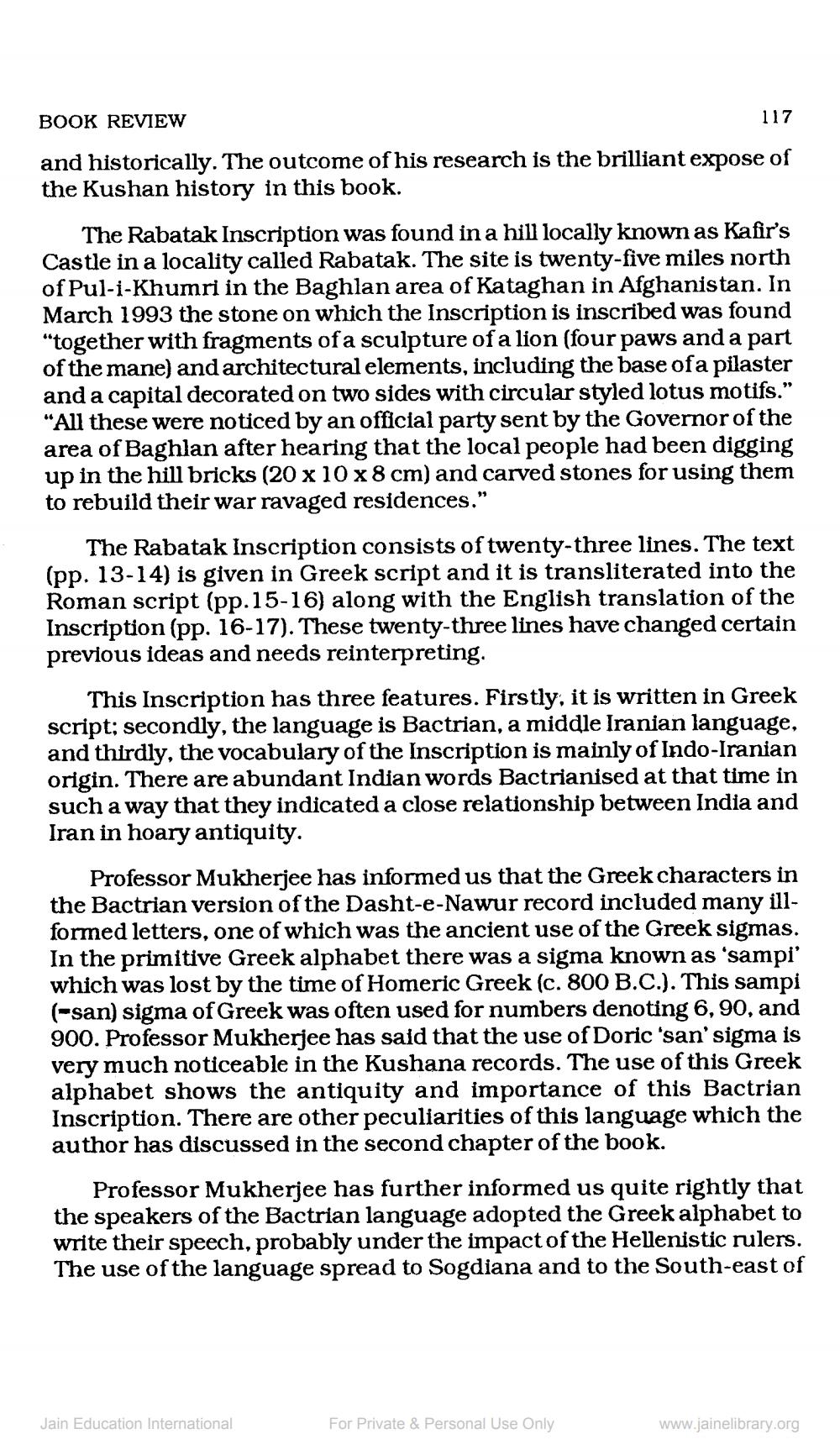Book Title: Jain Journal 1999 01 Author(s): Jain Bhawan Publication Publisher: Jain Bhawan Publication View full book textPage 4
________________ BOOK REVIEW and historically. The outcome of his research is the brilliant expose of the Kushan history in this book. 117 The Rabatak Inscription was found in a hill locally known as Kafir's Castle in a locality called Rabatak. The site is twenty-five miles north of Pul-i-Khumri in the Baghlan area of Kataghan in Afghanistan. In March 1993 the stone on which the Inscription is inscribed was found "together with fragments of a sculpture of a lion (four paws and a part of the mane) and architectural elements, including the base of a pilaster and a capital decorated on two sides with circular styled lotus motifs." "All these were noticed by an official party sent by the Governor of the area of Baghlan after hearing that the local people had been digging up in the hill bricks (20 x 10 x 8 cm) and carved stones for using them to rebuild their war ravaged residences." The Rabatak Inscription consists of twenty-three lines. The text (pp. 13-14) is given in Greek script and it is transliterated into the Roman script (pp. 15-16) along with the English translation of the Inscription (pp. 16-17). These twenty-three lines have changed certain previous ideas and needs reinterpreting. This Inscription has three features. Firstly, it is written in Greek script; secondly, the language is Bactrian, a middle Iranian language, and thirdly, the vocabulary of the Inscription is mainly of Indo-Iranian origin. There are abundant Indian words Bactrianised at that time in such a way that they indicated a close relationship between India and Iran in hoary antiquity. Professor Mukherjee has informed us that the Greek characters in the Bactrian version of the Dasht-e-Nawur record included many illformed letters, one of which was the ancient use of the Greek sigmas. In the primitive Greek alphabet there was a sigma known as 'sampi' which was lost by the time of Homeric Greek (c. 800 B.C.). This sampi (-san) sigma of Greek was often used for numbers denoting 6, 90, and 900. Professor Mukherjee has said that the use of Doric 'san' sigma is very much noticeable in the Kushana records. The use of this Greek alphabet shows the antiquity and importance of this Bactrian Inscription. There are other peculiarities of this language which the author has discussed in the second chapter of the book. Professor Mukherjee has further informed us quite rightly that the speakers of the Bactrian language adopted the Greek alphabet to write their speech, probably under the impact of the Hellenistic rulers. The use of the language spread to Sogdiana and to the South-east of Jain Education International For Private & Personal Use Only www.jainelibrary.orgPage Navigation
1 2 3 4 5 6 7 8 9 10 11 12 13 14 15 16 17 18 19 20 21 22 23 24 25 26 27 28 29 30 31 32 33 34 35 36 37 38 39 40 41 42
